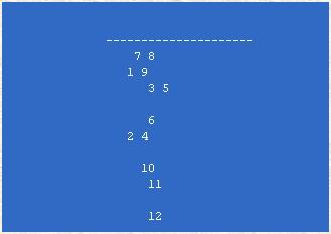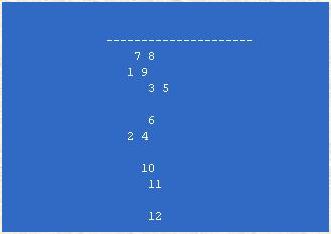THE H FORMULA, on the other hand, works on the premise that the most important part of the race is the first quarter, and determines the end result based on the relative positions of the horses at this point. My theory has always been, "you want to find the horse that runs the fastest, the slowest." This is what other handicappers refer to as the "lone speed horse." The best bet at the races is the one that only has one speed horse in it. Then it set its own pace and an experienced jockey will rate the horse, slow up the first quarter so that the horse will have "enough left" at the finish to withstand the challenge from the "closers" in the race. This also means the converse is true. When there is too much speed in the race the front runners will "burn" each other out and the closers will win the race. This makes the race look like there is a superior racehorse in the race(A Silky Sullivan) passing up the entire field but in reality he is just passing tired horses. - Dr. H
============
Doctor H. says: This is the crux of the H Formula. Years ago when I wrote a book, I said that this was what made the formula exciting. Actually it is the same as the H Predict but it gives you a visual look at the race. My premise is the most important variable in any race is the pace. This graph shows the track from an aerial view of the first call. The red line is the danger line. This is a factor I devised over time to evaluate the presence of too much speed in a race. The horses' position in relation to that line determines if the race will be won from the back or from the front. If there are two or more horses above the line, this means the race will be won from the closers. This is why in the H Predict, some races are flipped with the highest HNumbers at the top.
However, the graph is the first call. So if you see more than one horse above the line, look at the back horses. Now here is the key of the formula. Just because a horse is at the lower end does not mean it is a bad horse, it merely means the horse runs from the rear. If there are many horses pressing the front runners, then it will be hard for the front runners to win and the back horses are the ones to consider. If the race goes from a sprint to a route race, the danger line drops down according to the length of the race. Look at it this way. The leading horses are closest to the top of the graph, while the others fall lower relative to the rest of the field.
Before you bet, practice with past races. I think you will soon understand what a fantastic tool this is for handicapping. For examples, we'll just use a simple graph of the program numbers and use a dotted line for the danger line.
Example:

Suppose for a moment this is a 6 furlong race. Well obviously the 2 horse has a huge advantage because it is going to get an easy lead. At six furlongs the horse has a great chance of hanging on, whatever the odds are. If the horse is 20/1, all the better. It does not take a brain surgeon to realize if the horse is 5/2 or less, it probably has a better chance of winning.
Suppose this is a one mile and 1/16th race. The 2 horse will still have a chance of going all the way. The predict formula will pick 2-9-8-1. The 7 horse is the closer. Often if the jockey on the 2 horse does not rate the horse right and goes too fast, it might cause the 7 horse to be able to close. In this day and age of superfectas, the 7 horse probably should be included in the superfecta bet.
Confused...probably. Let us look at
Another example:

The predict will pick 10-9-5-6 because there is much too much speed in this race, sprint or route.
The more you look at the charts, the more you will begin to also see patterns.
Another example:

Say this is a 6 furlong race. The predict will pick 7-8-1-9. But this is a precarious race. The 10 -11-12 are in position to win and often do. Just keep watching all the races until you get a feeling for what I am trying to show you.
Do not abandon the Gold and the Power but we have been in business for 10 years. This upgrade is not for everybody, but is what I consider Helfman Formula- Advanced course.
I was very reluctant 10 years ago to include the Gold and the Power, but it has been successful beyond my expectations. However, start including the graph in your handicapping and you will have insight like never before.
I can assure you the graph will give you a look at the race you have never seen before. Some clients tell me this is worth everything in handicapping a race. Also remember, the front runners are not graphed from times but from formulas and include every race in which the horse has run that is included in the DRF files available prior to race time.
First Call Animation
